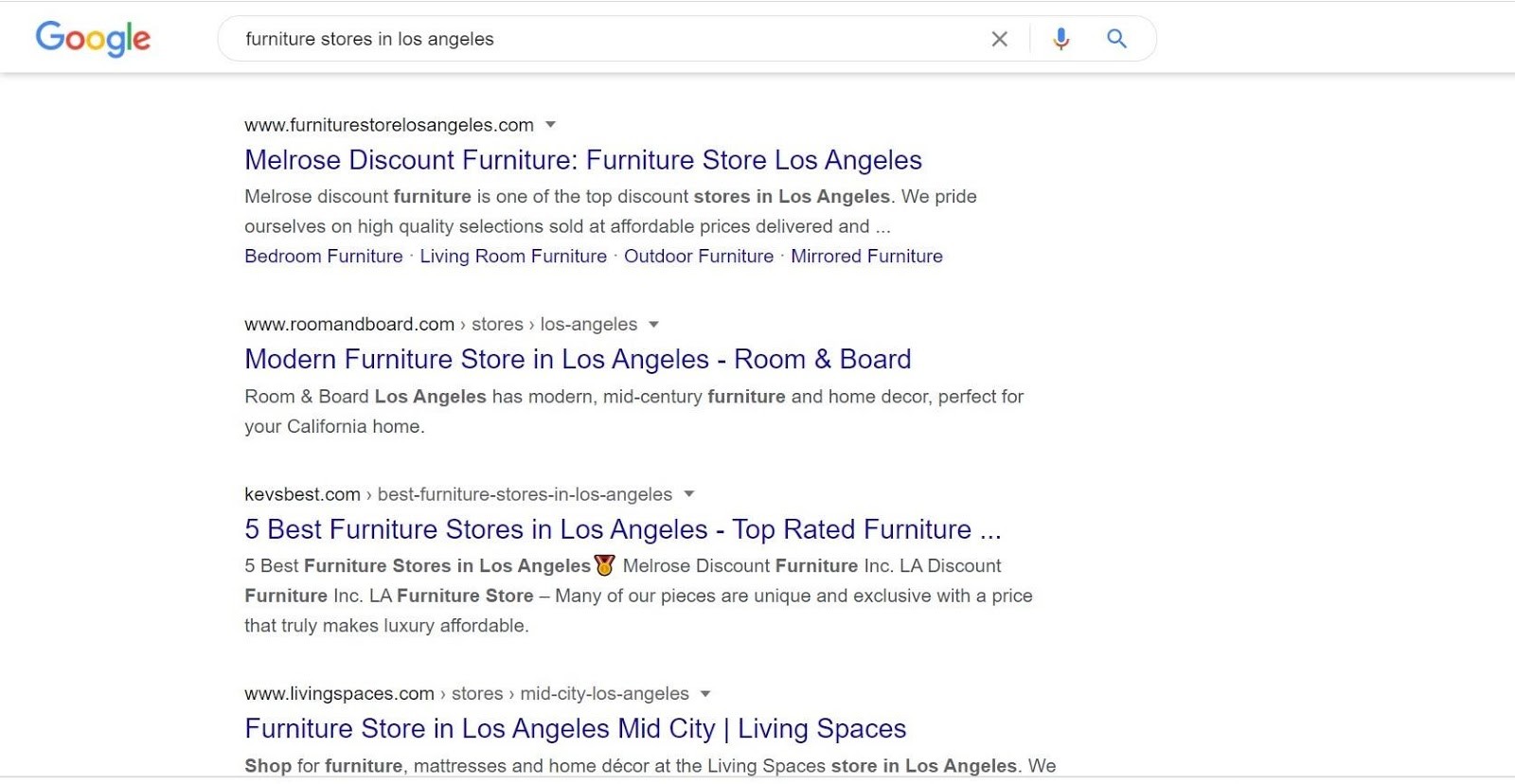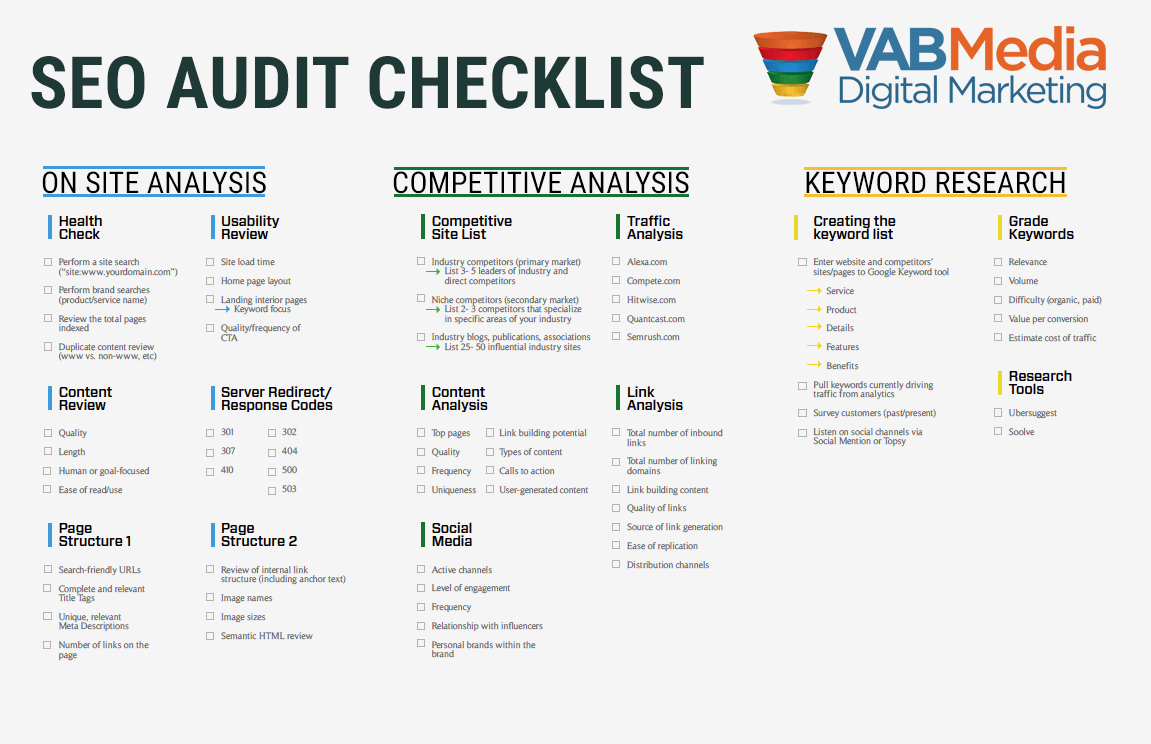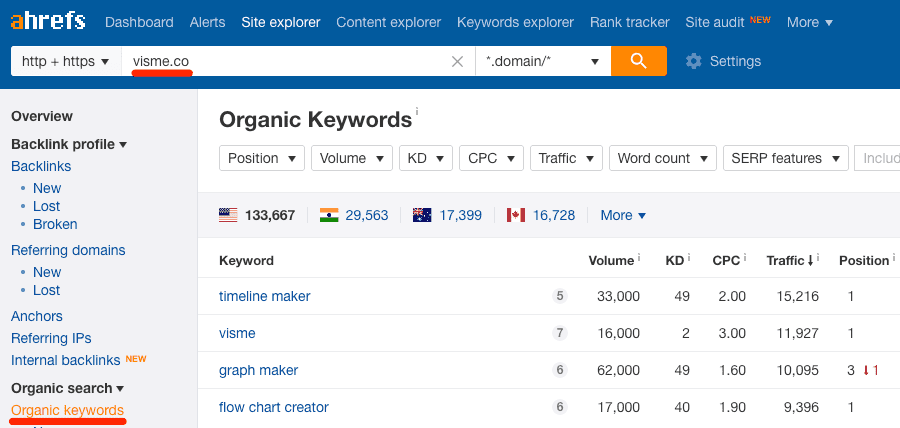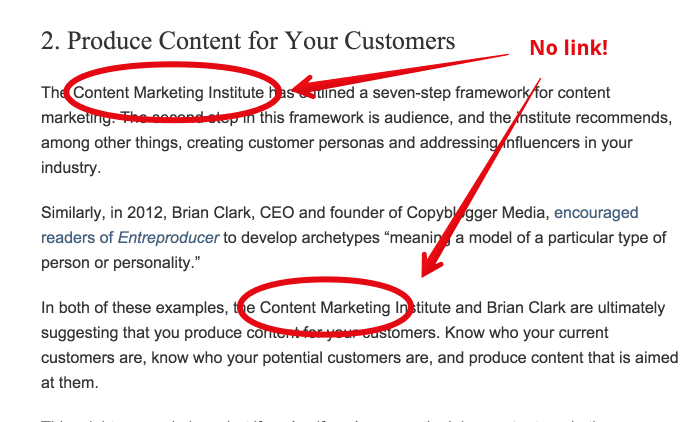Boosting Your Website’s Traffic with SEO
Over 80% of a website’s traffic starts with a search query. There are tens of thousands of people out there looking for what you have to offer, and it’s your job to make it easy for them to find you.
This is where search engine optimization comes in. Nailing your SEO strategy can boost your brand’s visibility and help drive traffic to your website.
Whether you’re running an eCommerce business or a SaaS company, you can offer content that’ll be valuable and relevant to your target customers to get them to notice and trust you.
Right now, Google dominates the search engine market with an 88.86% market share, and its algorithms are continually evolving. If you want your content to rank on Google’s first pages, you must stay on top of the latest trends and keep implementing the best SEO practices.
There’s no point dedicating hour after hour to creating content for your blog and landing pages if no one will see it. The search results pages that come after the first few are where information goes to die. Studies show that 75% of users don’t go past the first page.
Dominating SERPs can feel like a pipedream sometimes, but it’s very doable. You just have to be willing to go the extra mile to secure higher rankings, which will ultimately translate to increased search traffic, conversions, and revenue.
The Importance of Blog SEO
Your website can only have so many pages, and it’s not enough to help you organically rank on search engines like Google. Blogging helps improve your SEO quality by making your website more visible to people searching for keywords related to your content, products, and services.
It signals to Google that your website provides valuable content that is worth highlighting on the search engine results pages. Also, it creates more opportunities for you to show up in search engines and entice prospective customers to visit your website.
Other ways blogging and SEO can positively impact your company’s ROI and boost your organic growth include:
- It helps build your authority and establish you as an expert in your niche.
- It drives more quality traffic to your site that is more likely to convert.
- High SEO rankings serve as a 24/7 promotion for your business.
- It builds trust and credibility with your audience and influences their purchasing decisions.
- SEO gives you an edge over competitors with substantial advertising budgets.
- Improving your linking structure and user experience.
10 Techniques to Boost Organic Growth
Increasing your website traffic will allow you to convert more visitors into leads or customers. I’m going to walk you through 10 techniques that you can use to double, triple, and even quadruple your organic growth to reach your short and long-term marketing goals.
These tactics are fast and easy to implement and won’t require you to completely overhaul your website.
#1. Conduct an SEO audit
You cannot boost organic growth until you figure out what your website’s problem areas are. Carrying out an SEO audit will help you determine why your site isn’t generating enough search traffic and conversions.
You might have pages on your site that aren’t getting any traffic, links, or conversions, and contain irrelevant or shoddy content. Maybe some of your pages don’t have titles and meta descriptions, or you’re using the same meta descriptions for multiple pages. Things like this can negatively impact your site’s performance.
Check to see if all your pages are keyword optimized. If they aren’t, make sure you incorporate related keywords into each page naturally.
Are your URLs simple, short, and easy to understand, or do they look like gibberish? Search engines and users should be able to tell what your page is about just by reading the URL.
Have you added keywords to your image alt tags? Are your pages and blog posts properly formatted? Creating headings and subheadings tags for your content can help you get more clicks. So will writing short, scannable sentences, highlighting important information in your text, and including a compelling call to action.
Tools like Quicksprout and Ubersuggest can help you conduct an SEO audit on your web page. All you have to do is enter your URL into the search box, analyze the results, and fix issues where necessary.
After examining your site’s performance, use the insights you glean to set new goals, optimize your pages, and inform your strategy going forward.
#2. Optimize your landing pages
Your landing page should have a persuasive copy, reviews, or testimonials from satisfied customers, a clear call-to-action, as well as a modern and professional design. It has to provide useful and informative content that visitors will benefit from.
The keywords that you’re trying to rank for should be woven into the headline, subheadings, and body content of the page. Insert them naturally to avoid keyword stuffing, which is frowned upon by search engines.
Other ways you can optimize your landing pages include adding title tags, meta descriptions, and a long-tail keyword to them. Ensure that your content is over 2000 words as Google regards longer content as more valuable and rewards them with higher rankings.
The more landing pages you have, the more traffic/lead/sales generating opportunities you’ll get. Research shows that businesses with 10-15 landing pages see 55% more conversions than their counterparts with less than 10 pages. And those with more than 40 landing pages enjoy 500% more conversions.
#3. Make your website accessible on all devices
Whether a user is browsing your website on their tablet, desktop, or smartphone, they should be able to view and navigate your pages easily and smoothly.
With each passing year, more people are using their mobile devices to surf the internet, visit websites, buy stuff, and search for the information they need to solve a problem or fulfill a need.
If your website isn’t responsive, you’re essentially turning away more than half your potential search traffic, leads, and customers. You’re also signaling that your brand is untrustworthy and has no idea what it’s doing.
Ensure that your site loads quickly, your content and images are displayed correctly, and users enjoy a seamless experience across all devices and web browsers.
In 2016, Google updated its algorithm to give more search visibility to mobile-friendly websites and penalize those that aren’t. So if you want to earn those coveted top spots on the SERPs and drive precious traffic, your site must be optimized for mobile users.
You can use Google’s Mobile-Friendly Test Tool to ascertain how responsive your website is and what changes you can make to your current design to turn things around.
#4. Promote high-performing content on social media
Don’t just create content and wait around for people to find it. Take it to them. Share links to the content on your social media platform so your network can see it and be encouraged to check it out.
Add social share buttons to your posts so that people can easily share them on their social media pages.
When people click through to your site from social media, it tells Google that your content is interesting, relevant, and useful. The search engine giant will then be motivated to show your content to more people, so they too can derive value from it.
Facebook, Instagram, Twitter, Pinterest, and LinkedIn are great social platforms for promoting your brand’s content but don’t just limit yourself to them. You can grow your following, strengthen your online presence, boost your credibility, and search rankings by sharing high-quality content on platforms like Quora, Reddit, Slideshare, and other niche networks.
#5. Use your competitors’ SEO keywords
The best way to beat your competition is to spy on them and use their techniques against them. You can do this by carrying out keyword research on their top-performing posts to see what words or phrases they’re ranking for.
You’ll be able to see their rankings for each keyword, as well as their domain score, social shares, the number of backlinks they have, and the number of visits the content gets monthly.
Once you have a list of the keywords that have helped them make it to the top of the search engine result pages, you can use them to create better, more informative content that will outrank theirs.
You can use various tools to access your competitors’ SEO keywords, such as the Moz Keyword Explorer, Ubersuggest, Ahrefs, and SEMrush.
Simply enter the URL of one of your competitors—be it a large corporation or a small up-and-coming firm—into the SEO tool, and it’ll show you all the keywords they rank for, along with an estimate of the search traffic those keywords could bring to your website.
Don’t just assume you know what your competitors are doing. Go after the facts, and let the data help you crush them.
#6. Repurpose old content with more internal links
A good internal linking structure can influence your Google rankings and organic growth.
If you have old posts that are no longer getting attention, you can boost them by adding internal links to those pages from other content on your site that is performing really well.
Linking your content to other pages in your site will help those pages rank for relevant keywords, boost their SEO value, and pull in more traffic.
When creating internal links, strive to use anchor texts that are relevant to the page you’re linking to. Trying to game the system by using unrelated and unnecessary anchor texts hardly ever works and can negatively impact your on-page SEO. Save yourself future troubles and just do it right.
After adding internal links to the content, you can repurpose it for another channel or medium to get even more eyes on it. Change the format and publish it somewhere else.
Take that old blog post, turn it into a video, and upload it on YouTube. Convert your infographics into social media posts. If podcasts are your thing, you don’t have to go looking for fresh content ideas when you can just turn your old content into podcast episodes.
Many businesses have successfully used this strategy to send their organic traffic numbers through the roof. For instance, Ahrefs could land over 10,000 additional views by repurposing an old article into a video for their YouTube channel.
That said, make sure you create an in-depth content brief to inform quality rework, especially taking into account the right keywords and serp analytics. I recommend using SurferSEO to help with the same.
#7: Change your unlinked mentions to links
Not everyone who mentions your brand online is going to link to your site. It could be because they simply forgot to or were in too much of a hurry at the time to Google your page, copy the URL, and then link to it in their content. Or maybe you’re one of their competitors, and they have no intention of contributing to your traffic generation efforts.
Whatever the reason may be, you can reach out to those sites’ owners and try to get them to turn those mentions into links.
So how do you find these unlinked mentions? Use a tool like Brand 24 or BuzzSumo to search for mentions of your brand name across the web, then filter the results to highlight the unlinked mentions—sites or pages that are not linking to you.
Scan through this list to identify the sites you’re going to reach out to. Go through each mention to determine whether it deserves to be a link or if it makes more sense to leave it as it is.
You want to acquire links from high-quality, authority pages, so make sure that the prospects for your link building outreach are reputable brands that you’re happy to associate your business with.
Once you’ve made your picks, go looking for the email addresses for the site’s webmaster or manager, reach out to them, and politely ask for the mention to be converted into a link. If you can’t find an address on their site’s contact page, tools like Respona can help you drum up the correct email. Additionally, tools like breadcrumbs.io can help with lead testing, and limecall can help run email validation tests.
To improve your chances of getting a favorable response, try connecting and building a relationship with website owners on social media or other means before making your request.
#8. Use more visually stimulating content
Humans tend to engage with visual content a lot more than plain old text because our brains can process them 60,000 times faster. So you’re sure to see an uptick in the amount of traffic you generate when you create more visually appealing posts.
Consider adding more content like animations, images, infographics, and videos to your roster. Studies show that videos can increase organic traffic by 157% and conversions by over 80%.
Infographics are 30× more likely to be read from top to bottom than a full article and can boost traffic to your site by up to 12%. Going by these statistics, there’s no reason why you shouldn’t be actively developing and publishing visual content.
You don’t have to be an expert videographer, graphic designer, or illustrator to create these kinds of content. There are plenty of paid and free tools out there that can help you with that.
Canva, Easel, Venngage, and Visual.ly are great for making and designing infographics and original images, while Wideo, Animoto, and Headline can help you easily create great marketing videos.
#9. Integrate local SEO into your strategy
When people conduct searches on Google, many of them are looking for local information or solutions.
If I live in LA and want to buy furniture, I’m not just going to type “furniture stores” in the search engine. I’m going to use more specific parameters like “furniture stores in Los Angeles.” From there, I can identify the stores that are close to where I live, check out their opening hours, and get their contact information in case I need to make inquiries.

Paying attention to your local SEO will enable you to win potential customers who reside in the same geographic area that your business covers or is located. Target keywords related to your location, product, or service in your blog posts, service pages, and website landing pages.
Don’t forget to include these local keywords into your title tags, meta description, heading tags, page title, page copy, and image alt text.
Studies show that 72% of people who search for local businesses online end up visiting stores within a five-mile radius. You want to make sure these people can find you when looking for local data.
Get your business listed on relevant directories, including Google My Business, and ensure all the essential information like address and contact details are up-to-date. If you own a chain of restaurants in New York City, you’ll want to acquire listings/backlinks from NYC-focused directories. Doing this will beef up your location-based keyword rankings.
#10. Measure your SEO performance
Increasing your organic growth won’t happen overnight. You’re probably going to have to try a few strategies before you start seeing the results you want. However, you won’t be able to tell what’s working for you and what’s not unless you’re tracking and analyzing your SEO performance.
You should be able to identify the pages on your site that got the most or least traffic, what content resonated the most with your audience, and the SEO techniques that had the most significant impact on your rankings, traffic volume, and conversions.
Measuring your performance will allow you to pinpoint your website’s areas with UX issues so you can fix them. It can also help you figure out what type of keywords you should be targeting in the future for optimal results.
Make sure you monitor your social media activities when promoting your content on social platforms to see how well they’re driving engagement.
Tools like Nightwatch, Google Analytics, Google Search Console, and SEMrush can help you monitor and refine your SEO strategy to maximize returns.
Ready to increase organic traffic?
Getting higher rankings in the SERPs and growing your business doesn’t have to burn giant holes into your marketing budget or take forever to achieve.
The tactics discussed in this article will help you drive better traffic to your website to generate high-quality leads and generate more sales. They’re actionable and easy enough for you to implement right away and start doubling your growth numbers.
Don’t forget to keep your audience at the center of everything you do. Give them the content they want and are looking for, and you’ll see success in no time.
About the Author
Mark Quadros is a SaaS content marketer that helps brands create and distribute rad content. On a similar note, Mark loves content and contributes to several authoritative blogs like HubSpot Sales, CoSchedule, Foundr, etc. Connect with him via LinkedIN.
LinkedIn: https://www.linkedin.com/in/markxq/ Twitter: https://twitter.com/_markquadros Gravatar: workwithmarkquadros@gmail.com Website: www.dherealmark.som




